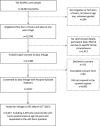Using Data Linkage to Investigate Inconsistent Reporting of Self-Harm and Questionnaire Non-Response
- PMID: 26789257
- PMCID: PMC4841016
- DOI: 10.1080/13811118.2015.1033121
Using Data Linkage to Investigate Inconsistent Reporting of Self-Harm and Questionnaire Non-Response
Abstract
The objective of this study was to examine agreement between self-reported and medically recorded self-harm, and investigate whether the prevalence of self-harm differs in questionnaire responders vs. non-responders. A total of 4,810 participants from the Avon Longitudinal Study of Parents and Children (ALSPAC) completed a self-harm questionnaire at age 16 years. Data from consenting participants were linked to medical records (number available for analyses ranges from 205-3,027). The prevalence of self-harm leading to hospital admission was somewhat higher in questionnaire non-responders than responders (2.0 vs. 1.2%). Hospital attendance with self-harm was under-reported on the questionnaire. One third reported self-harm inconsistently over time; inconsistent reporters were less likely to have depression and fewer had self-harmed with suicidal intent. Self-harm prevalence estimates derived from self-report may be underestimated; more accurate figures may come from combining data from multiple sources.
Keywords: ALSPAC; agreement; consistency; data linkage; self-harm; suicide attempt.
Figures


References
-
- Boyd A., Golding J., Macleod J., Lawlor D. A., Fraser A., Henderson J., … Smith G. D. (2013). Cohort profile: The ‘Children of the 90s'—The index offspring of the Avon longitudinal study of parents and children. International Journal of Epidemiology, 42, 111–127. doi:10.1093/ije/dys064 - DOI - PMC - PubMed
MeSH terms
Grants and funding
LinkOut - more resources
Full Text Sources
Other Literature Sources
Medical
